Spring is in blossom in the garden with vibrant colors, caterpillars and butterflies
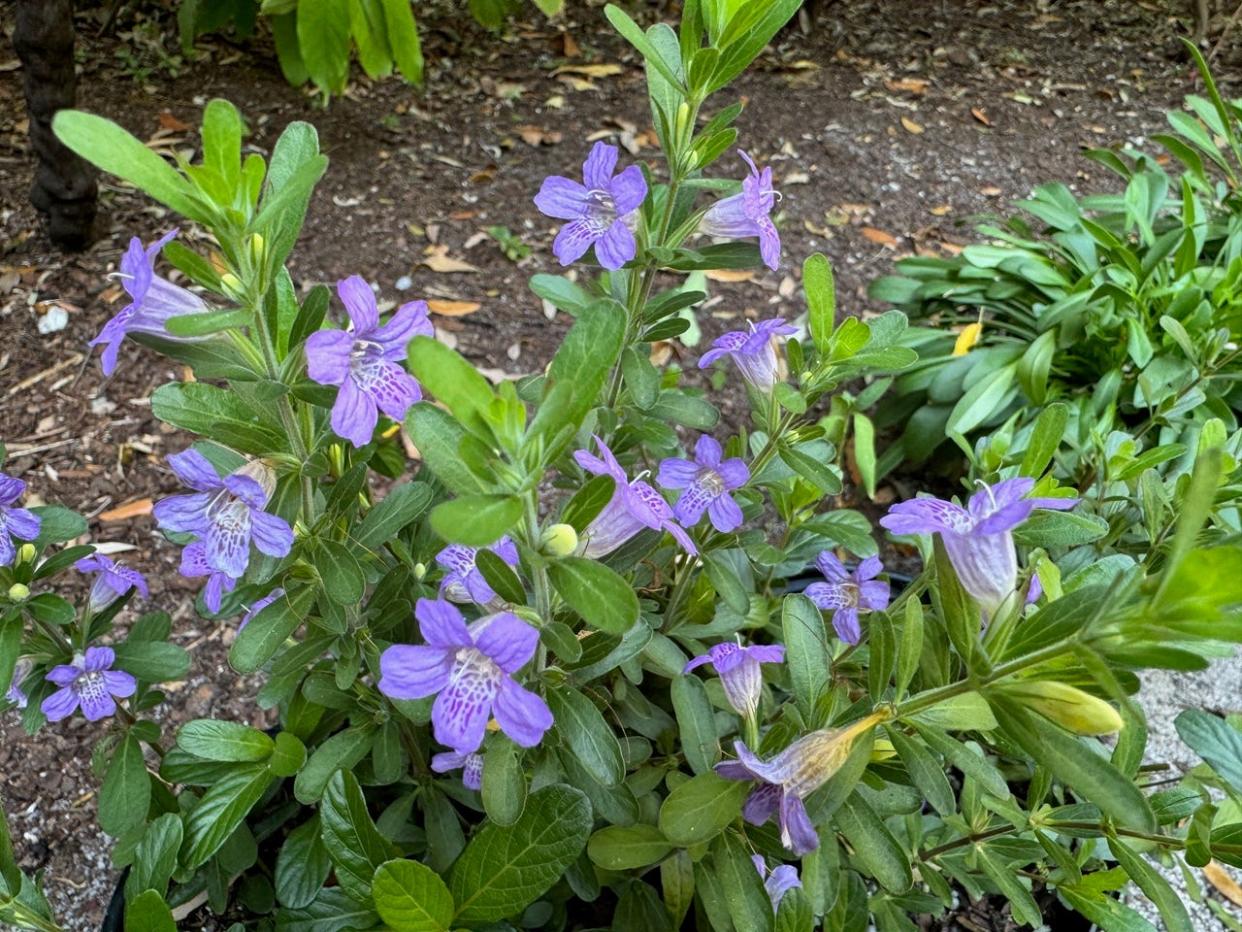
Spring has arrived, and my garden is a riot of color and activity.
Brilliant yellow flower clusters adorn the Bahama senna (Senna Mexicana var. Chapmanii), and I am hoping to spot some amazing caterpillars of the orange-barred sulphur butterfly that it hosts.
Below the senna there is a cacophony of yellow coreopsis, blue Carolina petunia, red salvia, and pinkish white swamp milkweed. Off to the side, violet twinflower and native white plumbago are finding some shade beneath a larger plumbago with bright blue flowers. Even the bay cedar is sporting small, perfect yellow blossoms.
More: Green gardening: How does your garden grow when left alone for months?
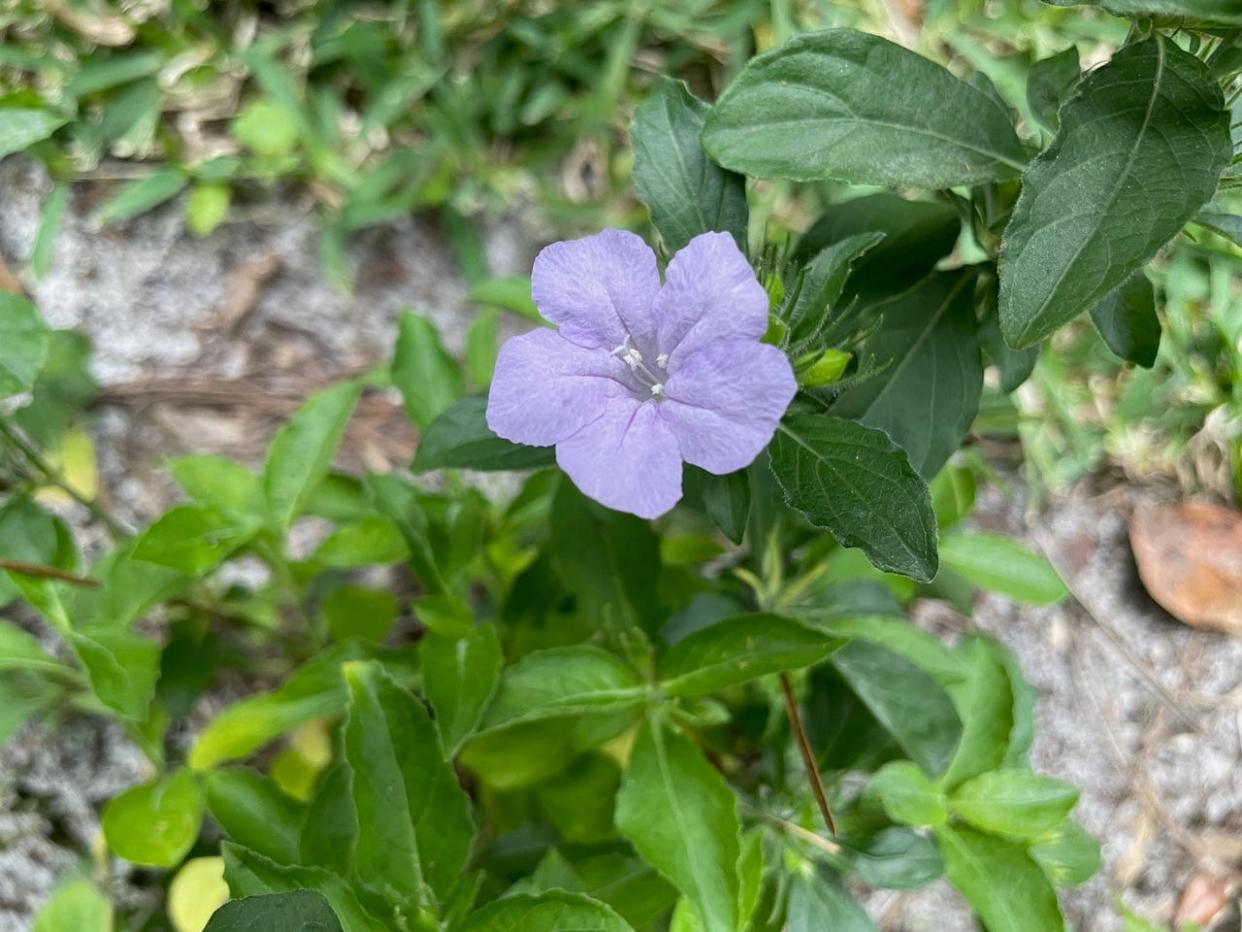
But the fetterbush (Lyonia lucida) is the most exciting, as I haven’t seen this bloom before. Its graceful arching stems with shiny green foliage carry dense clusters of small fragrant pinkish white bell-shaped flowers. This is a wonderful native shrub for shady areas, growing 3 to 6 feet, and it does well in sandy soils. Once established, it can handle drought as well as inundation by salt water.
The locustberry (Brysonima lucida) is also a treat with its multicolored blossoms that open pink and gradually turn yellow and red. Coralbean (Erythrina herbacea) is sending up tall spikes of deep red tubular flowers (loved by hummingbirds!) which are wonderful next to the white, yellow, and pink orchids in the neighboring ligustrum branches. All these plants are frequented by pollinators and their fruits are loved by birds.
Gardening represents a fundamental belief in beauty and happiness. If you have a garden full of diverse plants, native or otherwise, you’ll always have something of interest happening.
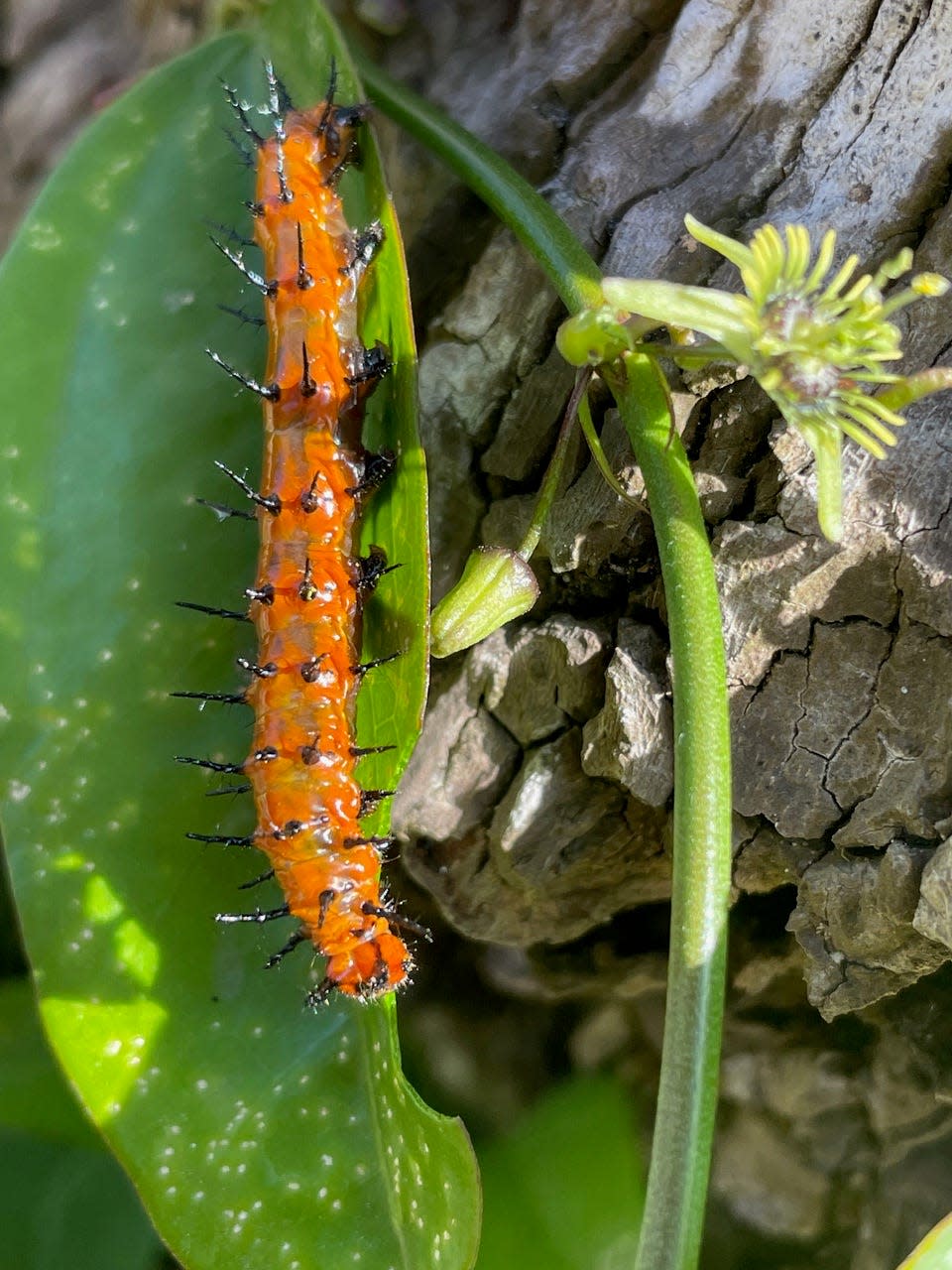
At dinner the other night, a friend related a recent afternoon spent counting the caterpillars on his milkweed and then monitoring their chrysalises. What fun to hear of people starting butterfly gardens and their excitement in the anticipation of a butterfly emerging from its chrysalis after several days!
We rarely think about this truly miraculous process, but every butterfly needs a specific host plant on which to lay its eggs. All plant foliage contains toxins that only certain insects can ingest, as these insects have evolved over millennia with enzymes capable of detoxifying these chemicals. When the butterfly eggs hatch into caterpillars, these tiny creatures can eat only the foliage of these specific native plants, and nothing else. Without their host plants, the butterflies cannot exist. For many of us, butterflies have always just been around; we notice them and perhaps remark about how pretty they are.
But the process by which they appear is incredibly impressive and complex.
Watching a fat caterpillar disappear into its chrysalis and then emerge as an exquisite, delicate, winged creature is truly fascinating. If you are lucky enough to find a chrysalis and engage in this event, count yourself blessed. Better yet, try to share the experience with a child.
But what I’ve noticed this year is that my butterflies are missing. I have host plants in my garden for at least 10 different species of butterflies: passionvines for zebra heliconians and variegated fritillaries, milkweed for monarchs, Bahama senna for cloudless and orange-barred sulphurs, saw palmetto for monk and palmetto skippers, coonties for aAtalas, locustberry for the Florida duskywing, bay cedar for the martial scrub-hairstreak, porterweeds for tropical buckeyes, and wild lime for giant swallowtails. But my garden hasn’t seen a single butterfly this season.
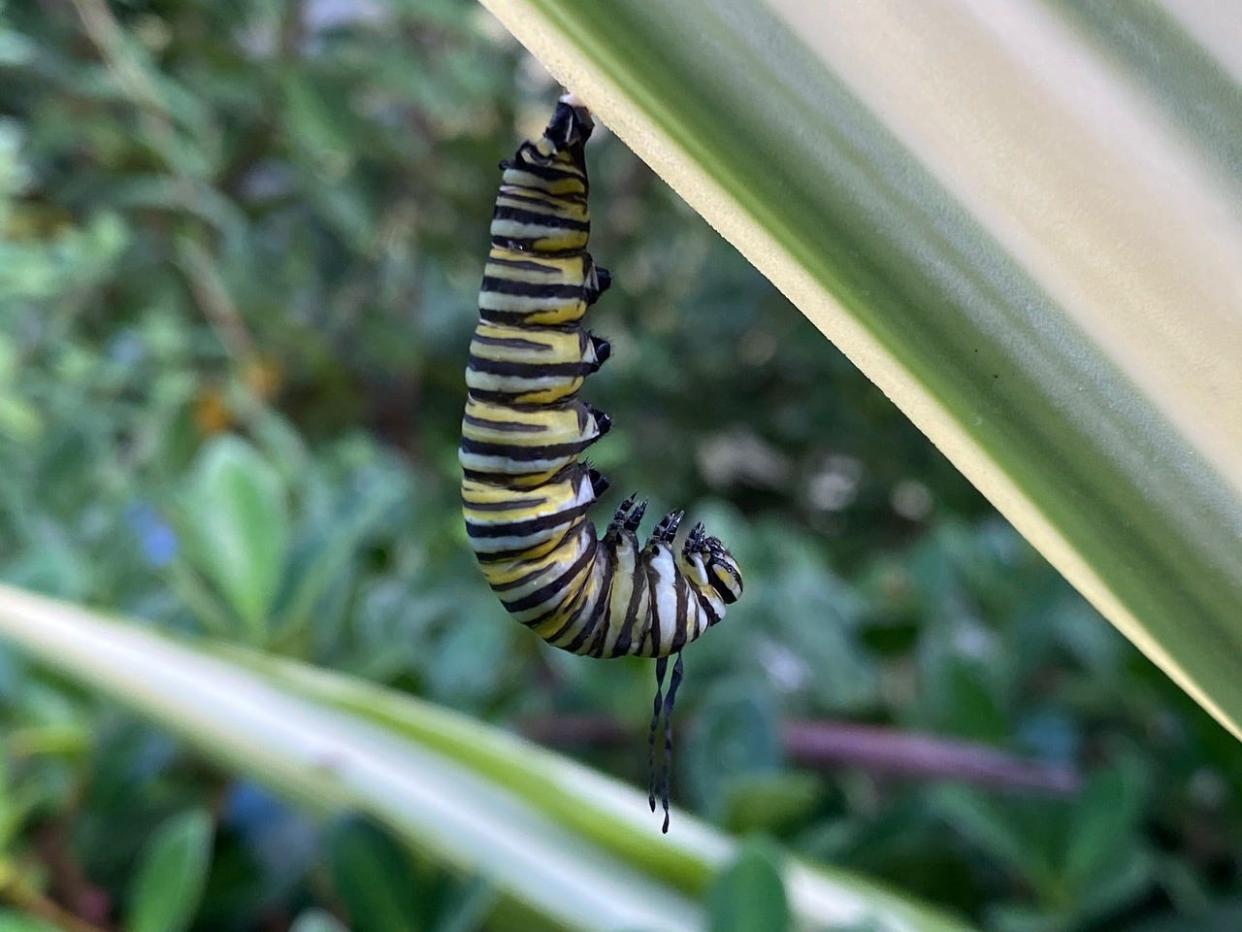
So I was understandably delighted to learn that my friend had counted 83 monarch caterpillars on his milkweed and was also willing to loan me a few. That adage of “plant it and they will come” only works if “they” are there in the first place. If we poison all our insects, which include our caterpillars, we’ll have no more butterflies, and I’m sadly not seeing a decrease in pesticide trucks on Palm Beach.
But let’s get back to all those wonderful spring blooming plants. Even the ones that aren’t displaying exciting blossoms are often showing off beautiful new growth.
Cocoplum’s red-tipped new foliage is an intense coral red, and the Simpson's stopper’s new growth is a lovely soft orange/pink. These are both in the shade, happily adding background interest to the showier plants in front. Saw palmetto (Serenoa repans) is also blooming now, with clusters of incredibly fragrant tiny white flowers that attract bees and butterflies, notably the rare and beautiful atala.
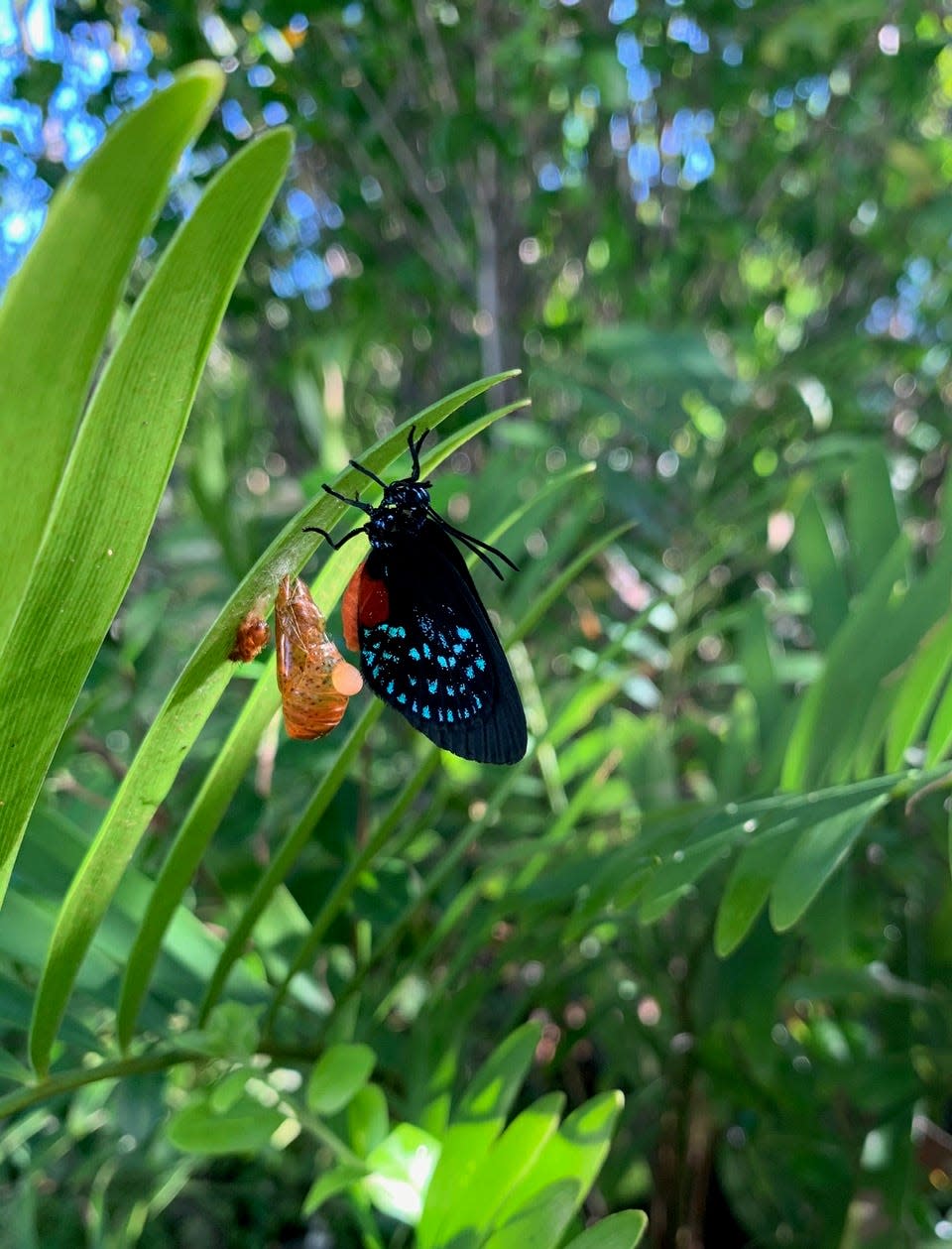
Blue porterweed (Stachytarpheta jamaicensis) is Florida’s only native porterweed, with coarse, toothed foliage and prostate stems. The small blue flowers are produced year-round and attract butterflies and hummingbirds. Jatropha integerrima, also known as peregrina, is a beautiful small tree or large shrub, native to Cuba, with spectacular bright pink or red flowers. I have this behind a hedge of yellow thryallis and pink Panama rose, and the color combination is spectacular.
Next to it is the wonderful native wooly teabush (Melochia tomentosa), which produces copious clusters of small violet pink flowers that are constantly covered with tiny bees and pollinators. The soft, almost fuzzy grayish leaves of this small tree are a delightful contrast to the greener foliage of the other plants, notably the Bahama senna and Jamaica caper. Jamaica caper is a terrific native shrub that will bloom in April or May with incredible pink-and-white starburst-like blossoms — something we all anticipate with great excitement.
The important thing is to get out and enjoy your gardens. Add some fresh herbs like parsley, basil, and rosemary to any open sunny spots; they don’t take up much room, and you’ll love having them for your kitchen. Parsley is also a host for black swallowtail butterflies!
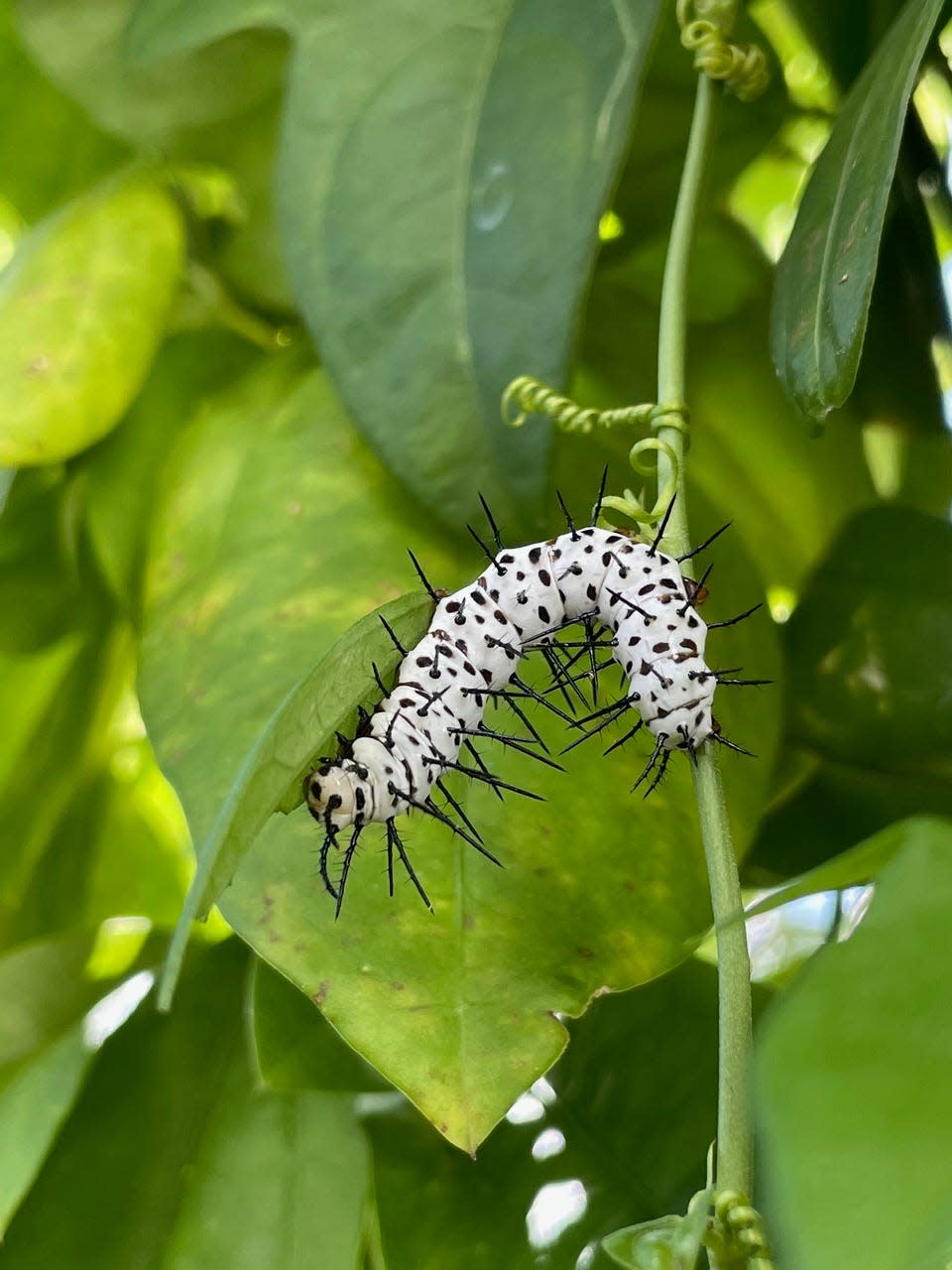
Passionvines are easy to incorporate into any garden and will guarantee zebra heliconians arriving in your yards. If you can find maypop (Passiflora incarnata), you can enjoy their delicious fragrance while you’re watching the zebra longwings, Julias and gulf fritillaries dance about.
If you don’t have a garden, visit a friend’s or neighbor’s. If there is one thing that is an absolute given, it is that all gardeners love to share their gardens, their stories and their plants. They are generous to a fault, even sharing their caterpillars.
In his recent talk at the Four Arts, Steve Wynn considered sunshine, water, air and flowers as the primordial forces of life and that man’s ultimate reward is knowing that he has improved the lives of others. I can think of no better way of improving life in Palm Beach, and on this planet, than by creating more gardens. It is equally important to eschew pesticides to allow insects, pollinators, birds and wildlife to thrive in the wonderful spaces we have created.
"One is never closer to God than in a garden."
Happy Easter!
This article originally appeared on Palm Beach Post: Spring garden in blossom: Vibrant colors of flowers, butterflies
